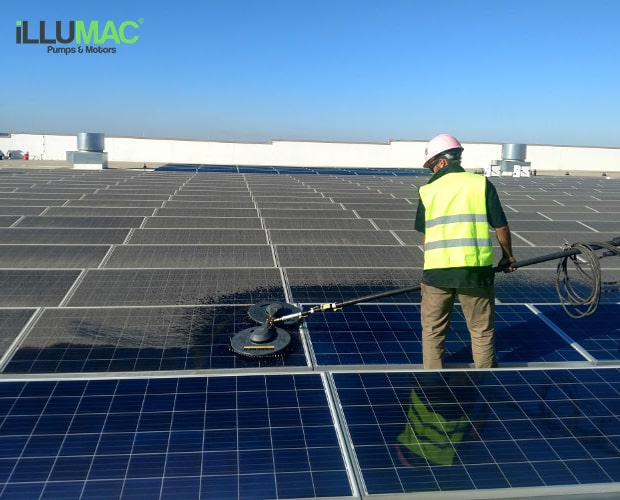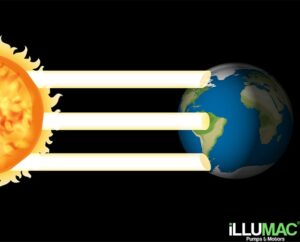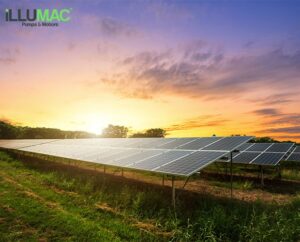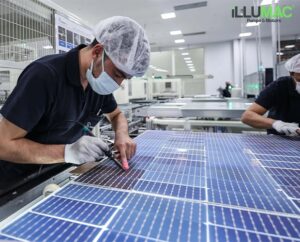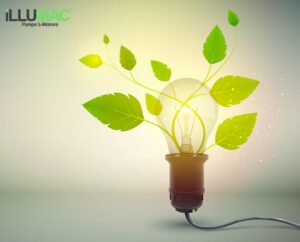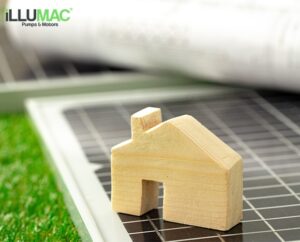It’s possible that you’ll be asked if it’s even essential. After all, you don’t climb a roof to maintain its cleanliness. Every time it rains, moisture washes it. Isn’t that sufficient for solar panels too?
It depends, really. Maybe that’s enough if you live somewhere where it rains a lot. It is inevitable that there will be greater dust buildup than usual if you reside in a dry region, adjacent to industrial areas, or near building sites. The accumulation of trash and bird droppings on the panels is another factor.
These things and others have a tendency to accumulate on solar panels, blocking the sunlight and lowering their effectiveness. Keep the panel surface free of dirt, dust, debris, and stains if you want to get the most out of your home solar energy installation, which is what you should be aiming for.
You must be considering the best way to clean solar panels. The fix is routine panel cleaning. Again, depending on your location, how quickly dirt gathers, and how the performance of the panels is impacted by the deposition of dirt, you may need to clean panels more frequently.
There are expert solar panel cleaning services available to handle the task for you. Continue reading if you want to learn how to do it yourself and don’t want to spend money on them.
You can learn the dos and don’ts of cleaning solar panels from this page, which also walks you through the steps.
Why do solar panels need to be cleaned?
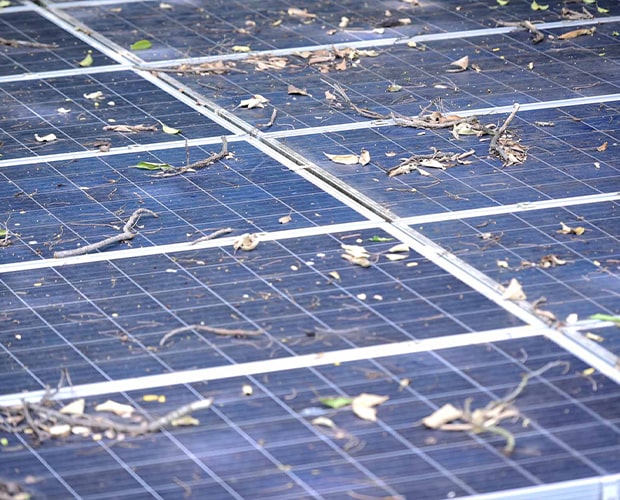
When it comes to relying on rain to clean solar panels, generalization is difficult. Once a month or once every two months of light rain would be sufficient to keep solar panels clean if the area’s birds are uninterested in them and the air is clean. If not, you might need to have the panels cleaned even with more frequent showers.
During the dry time, airborne contaminants like dust, dirt, smog, pollutants, and particulate matter can collect on the panels. More of them will be brought to the panels by the rainfall and left there when it rains. Rainwater won’t be able to completely wash the deposits off the panels if there is not enough rain or if there are too many deposits. Following the end of the rain, these deposits dry out on the panels’ surface and prevent sunlight from penetrating the glass cover.
On the surface of the panels, these deposits create layers, and additional layers are added with each rain. Along with these “invisible” deposits, other problems include pollen, leaves, and bird droppings. If ignored, the cumulative influence of all three factors can reduce solar panels’ efficiency by up to 20–50%.
Wouldn’t you want your automobile washed after driving in the rain? Why do we occasionally have our windows cleaned? In many ways, solar panels are comparable.
While some dirt and debris will be washed out, more will be brought in by the rain, creating a sort of slurry. Whatever remains eventually dries out and produces a coating of deposit. It is more important to keep windows and automobiles clean and aesthetically pleasing. However, this also has an impact on the performance of solar panels.
You need to put some effort into keeping the panels clean if you want to benefit from renewable energy.
How do you know when to clean the panels?
Installing a solar power monitoring system is the simplest approach to determining the output of your solar panels. You can determine how much energy the solar panels are producing from this.
Again, depending on the weather and the position of the sun, this changes from season to season. If your system’s energy production has been tracked for a year, you will be able to predict its performance on any given day. The most frequent cause of the solar power output monitor showing a lesser output than you anticipated is the accumulation of dirt on the panels.

Some of the things you need to understand are:
Do the nearby tall trees drop their leaves on the panels?
Are there any high-pollution areas nearby, such as factories, construction sites, or roads?
Do your panels appear to be virtually horizontal?
Does it rain extremely infrequently where you live?
Are you impacted by smog, fires, or pollen?
If so, do they have nests?
Does it rain a lot where you live?
The panels might potentially be harmed by excessive rain. This is the ideal environment for the growth of fungus, algae, and moss when combined with excessive humidity. It collects more the more it rains.
Solar panels kept at steeper inclinations have less of a possibility of collecting dirt and debris than those kept at nearly level angles. This is not an option for you because the angle of sunlight incidence serves as the determining factor.
Physically inspect the panels and search for causes if you observe a low output in the solar power monitor. Sometimes, rather than the dirt accumulation, the problem may be an overhanging tree branch.
Some homeowners might have trouble getting to the rooftop solar panels. Can you use a ladder to get there? Renting a man-lift or scaffolding is an additional, more expensive option.
It’s time to organize the cleaning after you’ve examined the roof and determined that there is indeed too much dirt and debris on the solar panels.
Consider using telescopic cleaning tools like brushes and water hoses that can be operated from the ground if you intend to clean the panels from the ground up.
Before you proceed...
If you choose to proceed with the DIY approach, consider your ability to do the task safely. Consider your options before going the DIY route if the solar panels are too high or if the setting is too slippery or steep. Your safety is the most crucial thing.
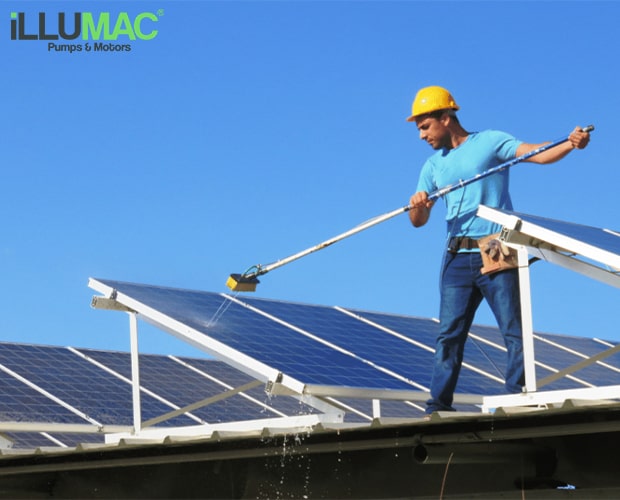
Find the appropriate cleaning tools next. Even though the principles apply to most solar panels, it is best to refer to the manufacturer’s cleaning recommendations.
Guidelines for cleaning solar panels
- The solar energy system must be turned off first. Never try to clean solar panels while the system is producing electricity. If you’re unsure how to proceed, see the manufacturer’s user manual or contact their customer service department.
- Pick a day when the sun is not shining brightly if you have the option. Even rainy days are inappropriate. A cooler day is preferable for still another reason. There is a greater chance of the panel’s glass top splitting on a hot, bright day when the water dries up on the surface of the panel.
- The day after a period of intense rain is the best day to clean solar panels since the rain will have removed the majority of the deposits and soaked up the remainder. Your task would become quicker and easier as a result.
- Opt for a brush with softer bristles since rough ones can scratch solar panel glass. The sun may not be absorbed as a result of these scratches.
- It’s not a good idea to use powerful detergents. When there is a lot of dirt buildup, you could be tempted to take one. It would facilitate quicker surface cleaning. However, it can also harm the metal frame and glass top in the process.
- You can actually clean the panels without using soap or detergent if you do so frequently. Use a light one, such as dishwasher detergent, if at all possible. You can create your own cleaning solution for solar panels by combining a little amount of mild soap solution, one part vinegar, and eight parts water.
- You can wipe the panel’s upper surface, which is often covered by a protective glass layer. Don’t try to moisten the underside of the panels where the electrical connections are while you’re at it. Even if dirt and debris have accumulated behind the panels, it is best to avoid cleaning it yourself. For the same, contact cleaning professionals. Anyhow, the panel’s performance won’t be impacted by this. Use a dry, hardwood brush to remove the accumulated dirt and debris if you feel the need to clean it.
- You should hire a man-lift or scaffolding to reach the solar panels if your house has multiple stories and the only way to get them is from the ground.
Continue if you still believe you can complete the task. However, if you ever feel that a task is well beyond your capacity, stop working right away. Hiring a pro to complete the project won’t do any harm.
Directions for cleaning solar panels in detail
- It will be simpler if you pick a day immediately following a rainstorm. The sediments would have been partially cleansed and partially soaked by the rain.
- Start by brushing off the loose dirt and particles that have accumulated on the solar panel’s surface.
- To remove the last residues, mist the panel with water. If there is a lot of accumulation, you might need to repeat this process several times.
You can use the soft brush to remove the deposits after the water has made them more pliable. If it still doesn’t seem like it is coming off the way you want, you can spray water on it once more, let it soak, and then use the brush. Continue doing this up until you are happy with the outcomes.
To remove the loose deposits, use a garden hose.
If there are stubborn deposits in certain locations, you can sprinkle a light cleaning solution on them and then scrub the area with a soft brush, sponge, or cloth.
The panel surface should be cleaned with a soft cloth and a hose. By wiping, you can reduce the possibility that leftover deposits will leave streaks on the panel surface. Streaks on the panel surface can be prevented by using distilled or deionized water.
After cleaning, allow it to dry in the sun for a while before turning on the system.
Check the monitoring system’s solar energy output. Now that the panel surface is clean and soaking up all the sunshine that is falling on it, you should notice an increase in power production.

